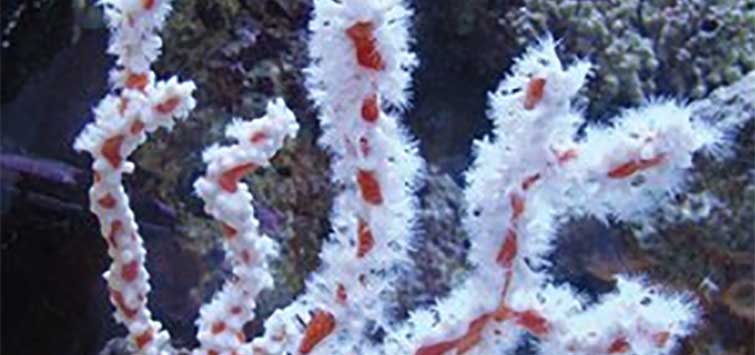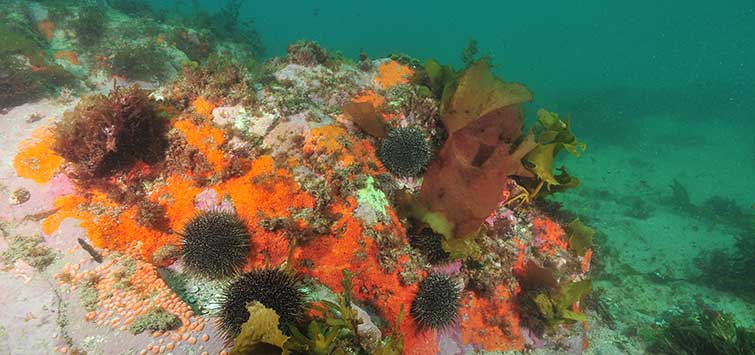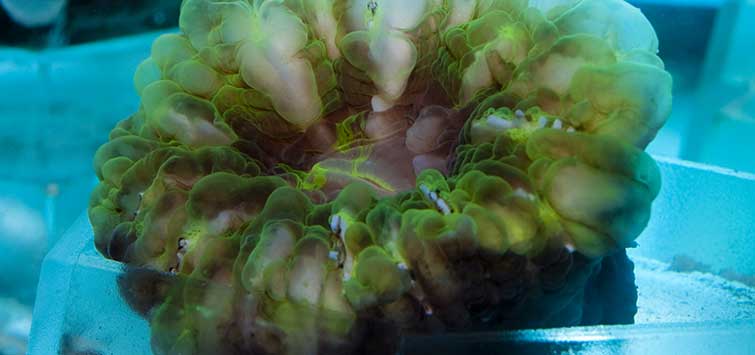Agelas gracilis
Common Names: Candy cane sponge
Phylum: Porifera
Class: Demospongiae
Order: Agelasida
Family: Agelasidae
Range: Western and Indo-Pacific waters including Australia (primarily eastern Australia including the Great Barrier Reef). This specimen is said to have come from Australia.
Natural Environment: This sponge (the red underlying animal) and its encrusting zoanthid species (the white, polyped outer layer) are found attached to various types of substrate in shaded coastal areas, e.g., under overhangs, and near or in caves and crevices.
Water Requirements: Calcium 430 to 450 mg/l, alkalinity 2.5 to 3.0 meq/l, pH 8.1 to 8.2, specific gravity 1.024 to 1.026, phosphate < .015 mg/l, and a temperature range of 72° to 83°F.
Captive Care
These are non-photosynthetic/azooxanthellate filter-feeding animals that require shaded areas receiving excellent water movement. The zoanthid requires at least one direct daily feeding when its polyp tentacles are extended. Feed it live or preserved phytoplankton, zooplankton, enriched brine shrimp, mysis shrimp, small pieces of marine fish or shrimp flesh, and products containing frozen or freeze-dried cyclops.
Feeding
As with most sponges, this species should be kept in a nutrient-rich system or one that can be fed heavily without causing unwanted algal growths. Trace elements and other liquid-based products made especially to enhance the nutrition of filter-feeding animals should also be used per manufacturer instructions.
Dead Tissue
If a colorful sponge contains any gray or white tissue—no doubt dying or dead tissue—beware, as the entire specimen could deteriorate quickly. Nevertheless, if it is not overly damaged and still desired, it’s possible to cut those dead areas out without harming adjacent tissue, but be certain to keep it underwater when doing so.
The Genus Epizoanthus
The encrusting white zoanthid is possibly one of 48 known species in the genus Epizoanthus. It is quite similar in appearance to E. scotinus, but E. scotinus is thought to be an eastern Pacific species only. E. stellaris is known to be from the Indo-west Pacific and could be another possibility, but I have unfortunately been unable to locate a photo of that particular species. It could also be a different species or an unnamed one.
Without the help of the noted British marine biologist and diver Vincent B. Hargreaves, PhD, I would still be trying to identify this attractive combination of animals.
As he says, “The problem here is the classification of the genera Parazoanthus and Epizoanthus is not, at the moment, well defined. There is much, in fact, that we do not know about these cnidarian creatures, and the current knowledge of the distribution of many is sparse and should not be viewed as an exact science. Future research may very well prove some species are far more widespread than is currently known. For now, until there is further proof saying otherwise, it could well be either species.”

.png?h=595&iar=0&w=2781&hash=5FD5E69473BCC22199FBFA2FB71B6033)



